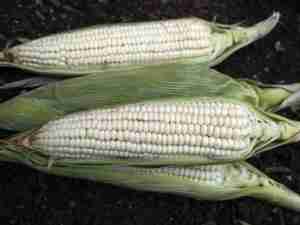Sea urchin roe, known as Uni, has a widespread reputation as a fresh new taste among sushi connoisseurs. "Uni is a fashionable yet affordable seafood with an international and inter-cultural attraction," says Vern Goehring, Executive Director of the California Sea Urchin Commission. "While primarily used in sushi, uni, thanks to avant-garde chefs, is finding it way into other ethnic-inspired menu applications," continued Goehring.
The rising tide of Japanese cuisine in the US has stimulated local demand for fresh sea urchin harvested from California coastal waters. Until recently, all California Uni was exported to Japan. Today, approximately one-third of the more than 800,000 pounds of local Uni remains in the states and is consumed in Japanese restaurants throughout the country, earning divers and processors significantly higher prices. California Uni, consumed in the US, has a wholesale value of approximately $9 million. Exports, which represent twice the tonnage, generate approximately $12 million in international trade.
In 2004, the California Sea Urchin Commission was formed to protect the ocean environment, ensure a sustainable sea urchin resource and a reliable supply of quality seafood product. The Commission operates under state law, with oversight by the California Department of Food and Agriculture. The newly formed Commission formalizes and expands efforts to protect the ocean and the sea urchin resource undertaken by the industry since its birth three decades ago.
Since the 1980's, California sea urchin fishermen and processors, through a self-imposed assessment, have spearheaded the cooperative efforts with the Department of Fish and Game to fund management, research and enhancement studies. Early achievements include 13 years of sea urchin research, which included seeding hatchery juveniles in artificial habitats, natural transplant experiments and tracking survival of young sea urchin. In 2003, the industry hired world-renowned fisheries experts, Professors Ray Hilborn and Jeremy Prince to review the fishery and recommend measures for a sustainable industry.
With the establishment of the California Sea Urchin Commission, the sea urchin industry has taken another significant step toward collaborative fishery management. Within months of forming, the Commission began to accumulate fishery independent research and sponsor new research initiatives such as the "Barefoot Ecologist," a data collection program that utilizes divers' knowledge, vessels and time to support comprehensive sea urchin management. "With innovative program such as the "Barefoot Ecologist", the California sea urchin industry has become a model for other fisheries," according to Dr Chris Dewees, California Sea Grant Fisheries advisor, University of California, Davis.
The sea urchin industry is an important part of the coastal economy in California. The industry is centered in Santa Barbara and Ventura. Sea urchin diving takes place throughout California from San Diego to Fort Bragg, excluding the Central Coast. More than 300 divers work on nearly 180 vessels and sea urchin processors employ close to 900 person -- all contributing significant economic support to their communities.
The California sea urchin industry is relatively young when compared to other food industries. During the 1960's sea urchins, due to their heavy grazing of kelp, were considered a threat to fisheries that depended on a healthy kelp forest. They were deemed such a threat that programs were undertaken to systematically eradicate sea urchins from California coastal waters.
In the 1970's fishing regulatory agencies and some in the commercial fishing industry began exploring the economic viability of a sea urchin indus








